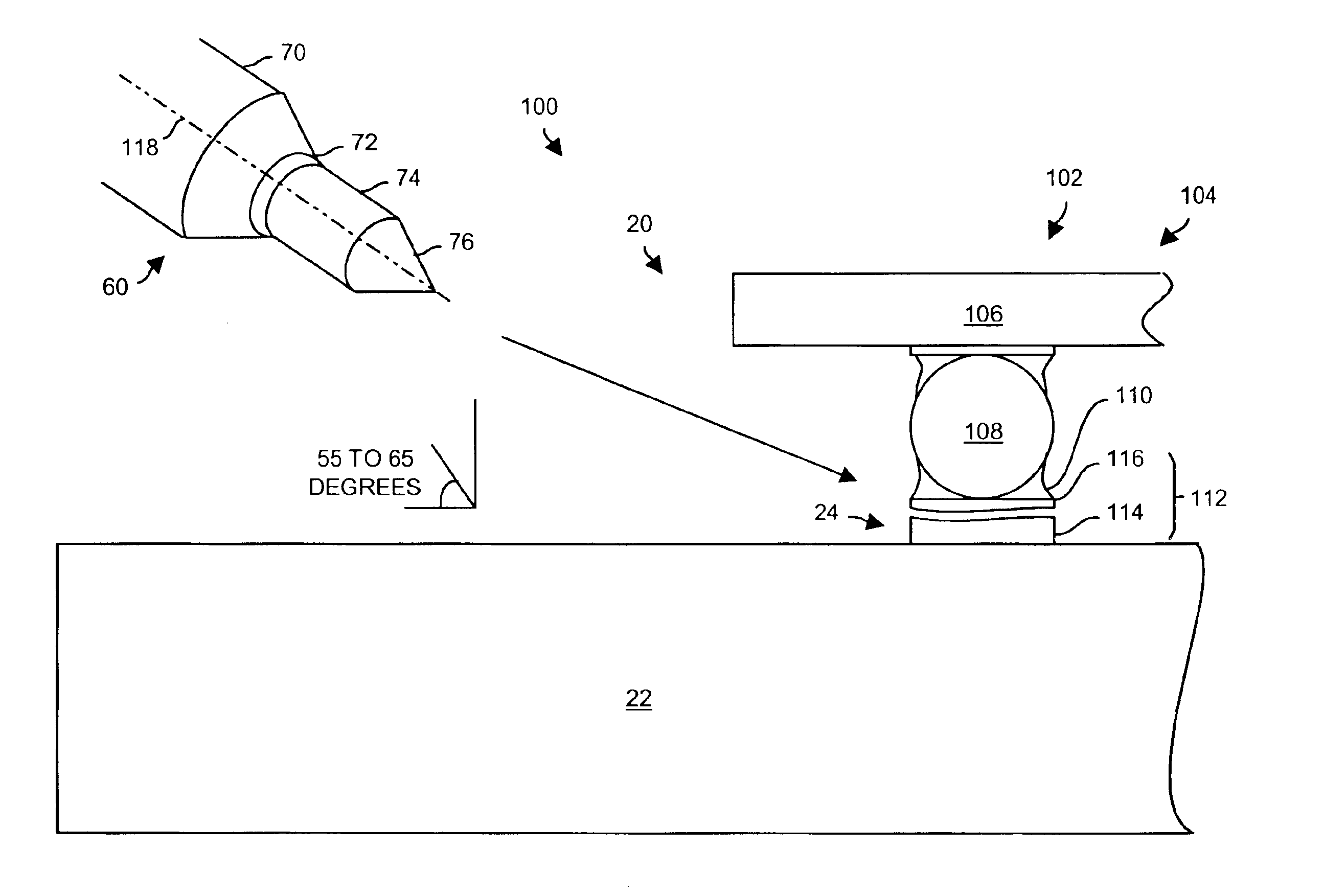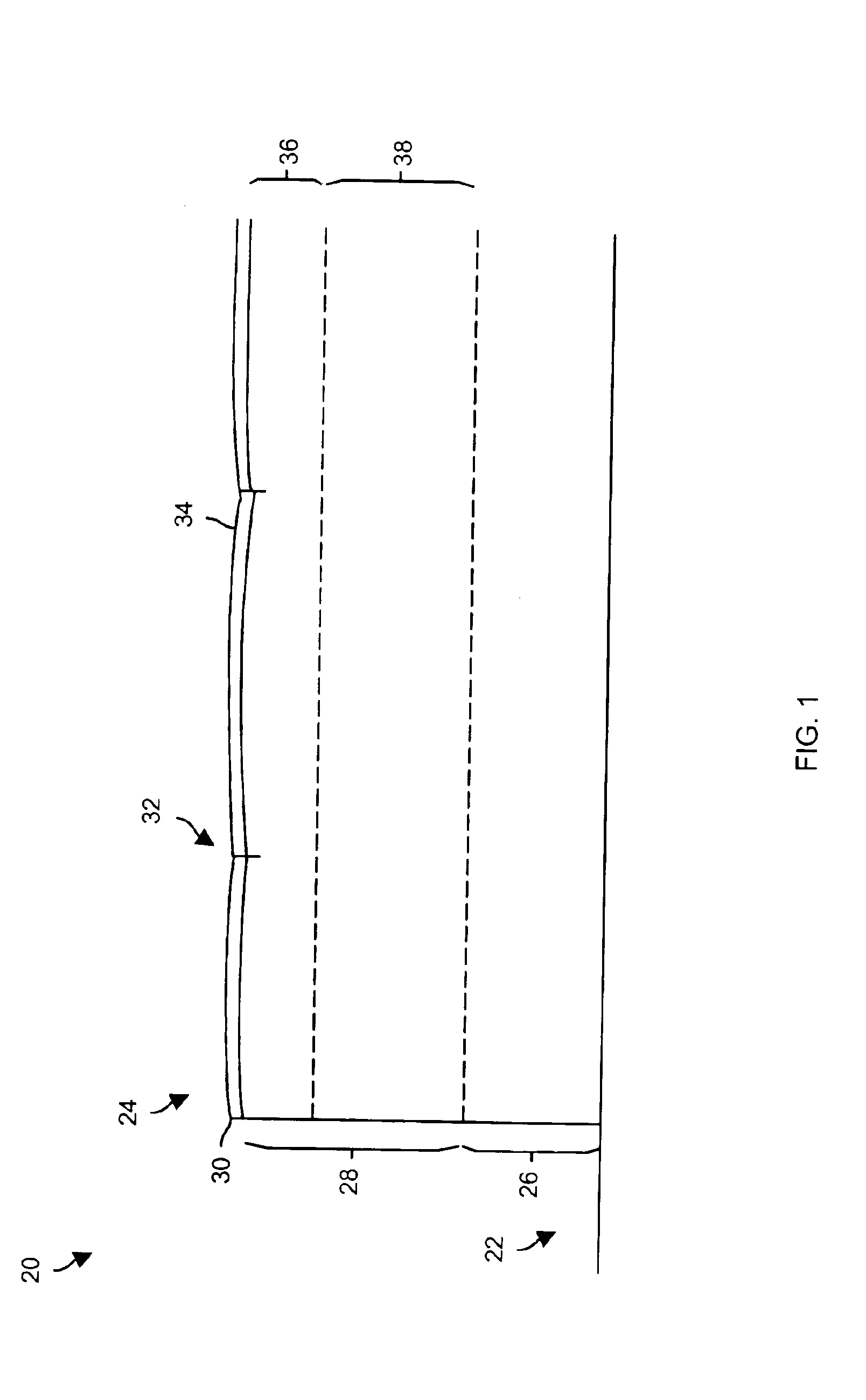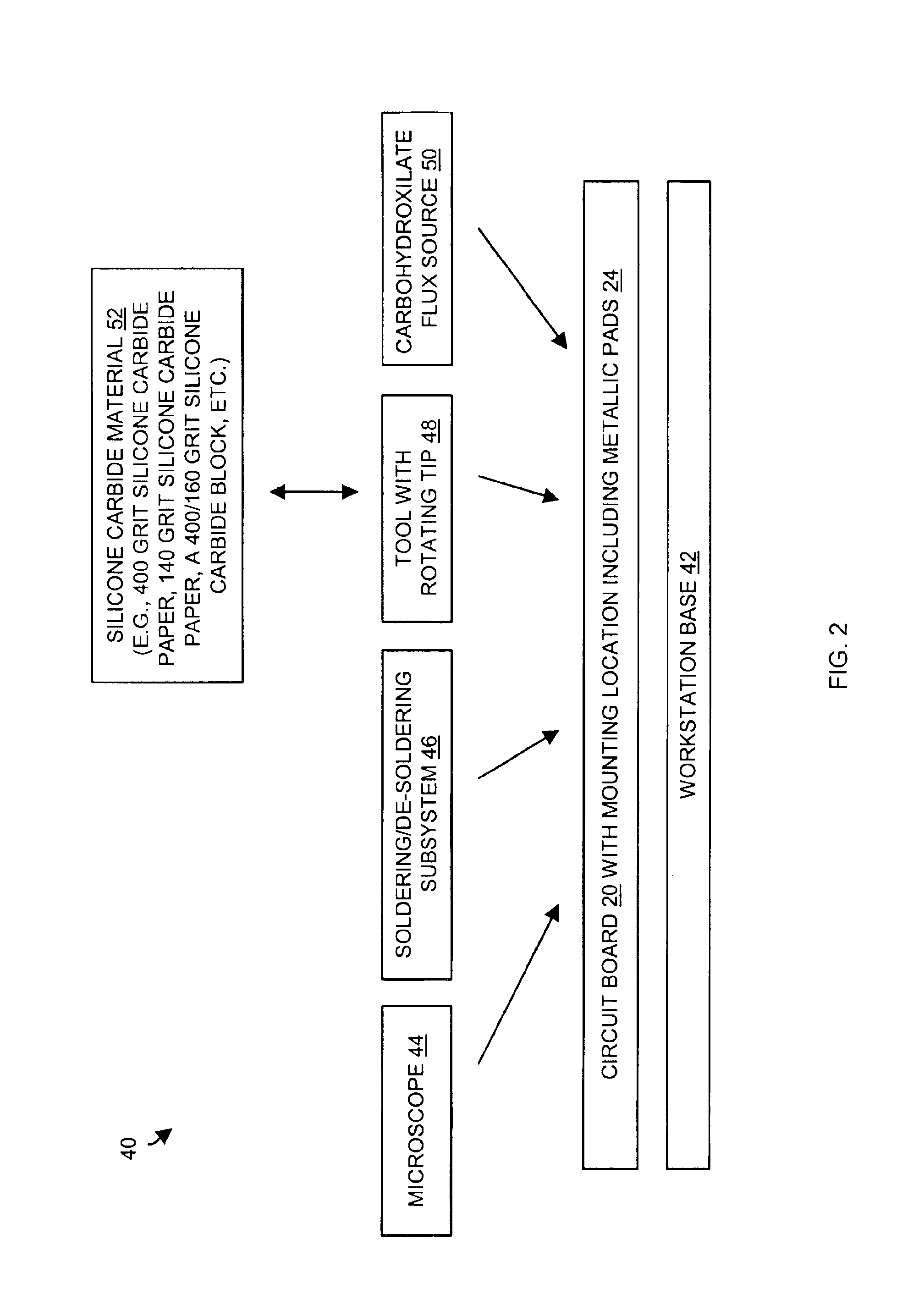Techniques for reworking circuit boards with ni/au finish
a technology of reworking circuit boards and finish, which is applied in the direction of manufacturing tools, solventing apparatus, other domestic objects, etc., can solve the problems of significant loss of added value, circuit boards may cost several thousands of dollars, and significant drawback for a company to bear the burden of regularly writing off such a cost, etc., to facilitate the containment of debris
- Summary
- Abstract
- Description
- Claims
- Application Information
AI Technical Summary
Benefits of technology
Problems solved by technology
Method used
Image
Examples
Embodiment Construction
The invention is directed to techniques for reworking a circuit board having a metallic pad. The techniques involve removing an outer portion of the metallic pad to expose an inner portion of the metallic pad. These techniques are well-suited for curing “Black Pad” defects since corrosion (e.g., oxidized metal and metal reacted with other contaminants) in the outer portion of the metallic pad have been identified as significant causes of poor electrical connectivity in metallic pads suffering from “Black Pad” defects. Accordingly, removal of the outer portion of such a metallic pad exposes a healthy and reliable inner portion of the pad (i.e., fresh and uncontaminated metal) which is well-suited for establishing a new healthy electrical connection with a contact of a circuit board component.
FIG. 1 shows a cross-sectional view of a portion of a circuit board 20 having a section of circuit board material 22 (e.g., conductive and non-conductive layers of material sandwiched together) a...
PUM
| Property | Measurement | Unit |
|---|---|---|
| time | aaaaa | aaaaa |
| angle | aaaaa | aaaaa |
| angle | aaaaa | aaaaa |
Abstract
Description
Claims
Application Information
 Login to View More
Login to View More - R&D
- Intellectual Property
- Life Sciences
- Materials
- Tech Scout
- Unparalleled Data Quality
- Higher Quality Content
- 60% Fewer Hallucinations
Browse by: Latest US Patents, China's latest patents, Technical Efficacy Thesaurus, Application Domain, Technology Topic, Popular Technical Reports.
© 2025 PatSnap. All rights reserved.Legal|Privacy policy|Modern Slavery Act Transparency Statement|Sitemap|About US| Contact US: help@patsnap.com



